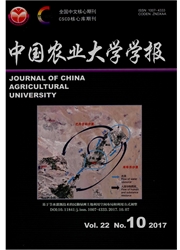

 中文摘要:
中文摘要:
基于粮食主产区安徽省塘溪村的农户调查数据,采用数学规划方法,构建农户模型,并根据调查地区的现实状况,设置补贴强度、农资要素价格、农产品价格以及土地经营规模变化等情景条件,模拟研究粮食补贴政策在不同情景条件下对农户粮食生产和家庭收入的影响。结果显示,粮食补贴政策的增产增收效应与农产品价格变化呈现出正比关系,但与要素价格变化呈现反比关系,且粮食生产成本提高的负面影响明显超过粮食补贴政策的激励效应;扩大土地经营规模,有助于发挥粮食补贴政策对农户粮食增产和家庭增收的乘数效应。建议提高粮食补贴标准,进一步推进农村土地流转,促进粮食规模化生产经营;规范农业生产资料市场,逐步建立粮食补贴与农产品价格、尤其是生产要素价格的联动机制。
 英文摘要:
英文摘要:
Based on household survey data from Tangxi Village in Anhui Province,a household model was constructed in this paper,using mathematical programming method and different policy scenarios were designed including intensity of grain subsidies, prices of agricultural input factors, prices of agricultural produce and the scale of land management to simulate the effect of grain subsidy policies on farmers' grain production and family income under different scenarios. The results show that the performance of grain subsidy policies has a positive relationship with the change of agricultural produce prices, but has an inverse relationship with the change of agricultural input prices, and the negative effect of increasing grain production costs significantly exceeds the incentive effect of grain subsidy policies. Expanding the scale of land management helps enhance the multiplier effects of grain subsidy policies on increasing farmers grain production and family income. Suggestions are proposed including improving the standard of grain subsidies, speeding up rural land tranfer to promote grain large-scale producing, and regulating the market of means of agricultural production to gradually establish the linkage mechanism of grain subsidies and agricultural produce prices, especially prices of agricultural input factors.
 同期刊论文项目
同期刊论文项目
 同项目期刊论文
同项目期刊论文
 期刊信息
期刊信息
